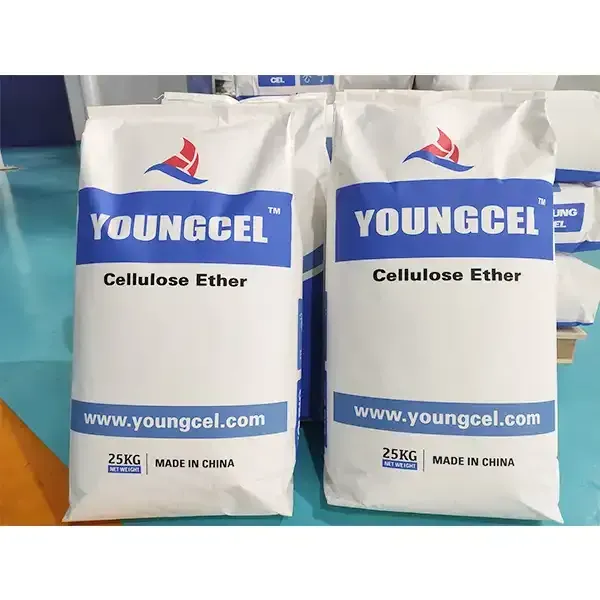Understanding Hydroxypropyl Methyl Cellulose (HPMC)
Hydroxypropyl Methyl Cellulose (HPMC) is a versatile cellulose ether that has gained significant attention in various industries due to its unique properties and multifunctionality. As a derivative of cellulose, HPMC is synthesized through the modification of natural cellulose, which is obtained from plant fibers. This structural alteration bestows HPMC with specific characteristics that make it suitable for a wide array of applications, particularly in the pharmaceutical, food, and cosmetic sectors.
One of the most notable properties of HPMC is its excellent film-forming ability. This quality makes it an ideal candidate for coatings in the pharmaceutical industry, where it can be used to enhance the stability and bioavailability of drugs. In tablet formulation, HPMC functions as a binder and a coating agent, improving the drug release profile and ensuring that medications dissolve at the appropriate rate in the gastrointestinal tract. The controlled release of active pharmaceutical ingredients (APIs) is paramount in improving therapeutic effectiveness and minimizing side effects, thus making HPMC a valuable excipient in modern pharmaceutical formulation.
Understanding Hydroxypropyl Methyl Cellulose (HPMC)
In the cosmetic industry, HPMC is appreciated for its ability to create smooth, uniform formulations. It acts as a thickening agent in creams, lotions, and gels, enhancing the aesthetic appeal and usability of cosmetic products. HPMC is also utilized in products designed for sensitive skin, as it is non-irritating and provides a smooth application experience. Additionally, its water retention properties help in keeping the skin hydrated, making it a popular ingredient in skincare products.
hydroxypropyl methyl cellulose hpmc

Another significant feature of HPMC is its water solubility. Depending on the degree of substitution of the hydroxypropyl and methyl groups, HPMC can be tailored to exhibit different solubility characteristics. This tunability allows formulators to create products with specific-performance attributes. For example, HPMC with a higher degree of hydroxypropyl substitution tends to dissolve more readily in water, making it suitable for applications that require quick solubilization. Conversely, lower substitution levels may result in slower dissolving formulations, which can be employed in controlled-release applications.
HPMC also boasts remarkable stability in varying pH levels and temperatures, which is crucial for many industrial processes. Its thermal stability ensures that it maintains its functionality even under extreme conditions, giving it a broad appeal across different manufacturing settings. Additionally, its inert nature makes it compatible with a wide range of chemicals and formulations, reducing the risk of undesirable interactions.
The use of HPMC is not without its considerations. As with any substance, ensuring the purity and quality of HPMC is essential, especially in pharmaceutical applications. Regulatory standards dictate that HPMC used in drug formulation must comply with specific guidelines to ensure safety and efficacy. The need for quality assurance aligns with the growing consumer demand for clean-label products that prioritize health and environmental sustainability.
In summary, Hydroxypropyl Methyl Cellulose (HPMC) is an invaluable compound with a diverse range of applications across various industries. Its unique properties, such as film-forming ability, water solubility, and stabilizing effects, make it a crucial ingredient in pharmaceuticals, food products, and cosmetics. As research continues to illuminate the possibilities of HPMC, its role in enhancing product performance and consumer satisfaction is likely to expand, reaffirming its position as a key player in the formulation landscape. Understanding and utilizing HPMC effectively will undoubtedly contribute to innovation and advancement in multiple sectors, making it a substance worth studying and appreciating.
-
Rdp Powder: Key Considerations for Wholesalers in the Building Materials IndustryNewsJul.08,2025
-
Key Considerations for Wholesalers: Navigating the World of Hpmc - Based ProductsNewsJul.08,2025
-
Hpmc Detergent: Key Considerations for WholesalersNewsJul.08,2025
-
Key Considerations for Wholesalers: China Hpmc For Tile Adhesive, Coating Additives, Concrete Additives, and MoreNewsJul.08,2025
-
Crucial Considerations for Wholesalers: Navigating the World of Construction MaterialsNewsJul.08,2025
-
Key Considerations for Wholesalers Sourcing Additive For Cement, Additive For Concrete, Additive For Putty from Additive Manufacturer Shijiazhuang Gaocheng District Yongfeng Cellulose Co., Ltd.NewsJul.08,2025




